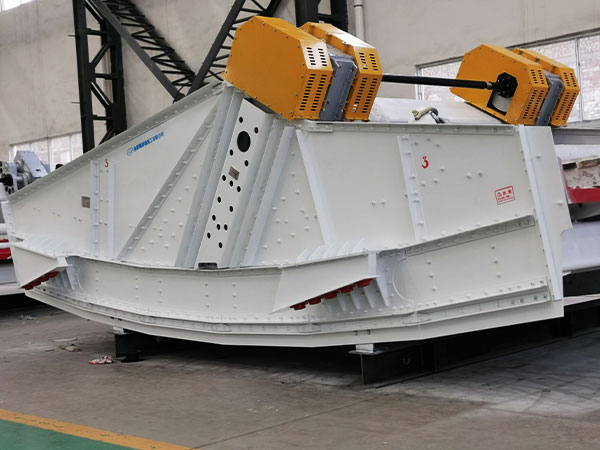What is the reason for the loud noise of the linear vibrating screen?
Linear vibrating screen is a kind of screening equipment commonly used in industrial production. It drives the screen body to perform linear motion through a vibration motor to achieve grading and screening of materials. However, in actual use, it is a common problem that the vibrating screen produces loud noise, which not only affects the working environment, but may also cause damage to the operator’s hearing. This article will discuss the reasons for the high noise of linear vibrating screens and propose corresponding solutions.
The loud noise generated by a linear vibrating screen can be attributed to several factors. Here are the primary reasons and potential solutions to mitigate the noise:

1. Loose Parts and Components
Loose bolts, nuts, or other fastening components can cause vibrations and noise.
Solution: Regularly inspect and tighten all fasteners and components.
2. Worn or Damaged Bearings
Bearings in poor condition can generate significant noise due to increased friction and vibration.
Solution: Inspect bearings regularly, lubricate them appropriately, and replace any that are worn or damaged.
3. Imbalanced Vibrating Motor
An imbalanced motor can cause uneven vibrations, leading to loud noise.
Solution: Ensure that the motor is properly balanced and aligned. Replace or repair the motor if necessary.
4. Improper Installation
Incorrect installation of the screen or its components can lead to misalignment and increased noise.
Solution: Verify that all components are installed correctly and aligned as per the manufacturer’s specifications.

5. Excessive Feed Rate
Feeding the screen with too much material can overload it, causing excessive noise.
Solution: Adjust the feed rate to an optimal level that the screen can handle without overloading.
6. Screen Media Condition
Worn or improperly tensioned screen media can flap and create noise.
Solution: Inspect the screen media regularly, replace worn sections, and ensure proper tensioning.
7. Vibration Isolation
Inadequate vibration isolation can transmit noise to the supporting structure.
Solution: Install appropriate vibration isolation mounts or pads to reduce noise transmission.

8. Unbalanced Material Flow
Uneven distribution of material on the screen can cause uneven loading and noise.
Solution: Ensure the material is fed evenly across the width of the screen. Install flow distributors if necessary.
9. Structural Integrity
Cracks or weaknesses in the screen’s structure can lead to noisy operation.
Solution: Regularly inspect the structural components of the screen for any signs of damage or wear and repair or reinforce as needed.
10. Resonance
If the operating frequency of the vibrating screen matches the natural frequency of its components or supporting structure, resonance can occur, amplifying noise.
Solution: Adjust the operating frequency to avoid resonance conditions. This might involve changing the speed of the motor or modifying the setup.
11. Lubrication Issues
Insufficient or improper lubrication of moving parts can cause increased friction and noise.
Solution: Ensure all moving parts are adequately lubricated with the appropriate lubricant as per manufacturer recommendations.
Regular Maintenance
Implementing a routine maintenance schedule can help identify and address many of these issues before they lead to excessive noise. Regularly check all components, ensure proper lubrication, and replace worn parts promptly.
By systematically addressing these potential causes, you can significantly reduce the noise generated by a linear vibrating screen and ensure its efficient and quiet operation.



